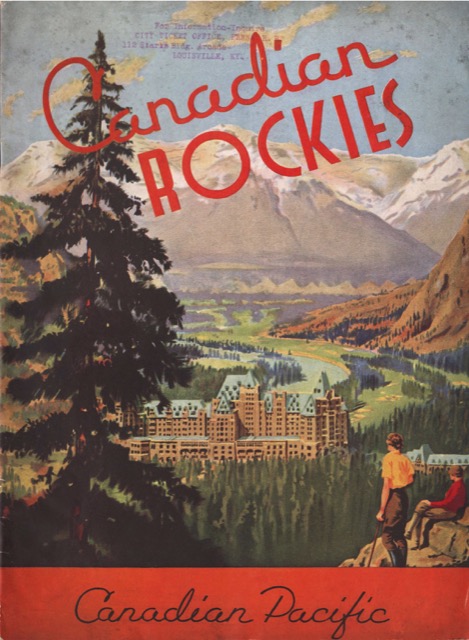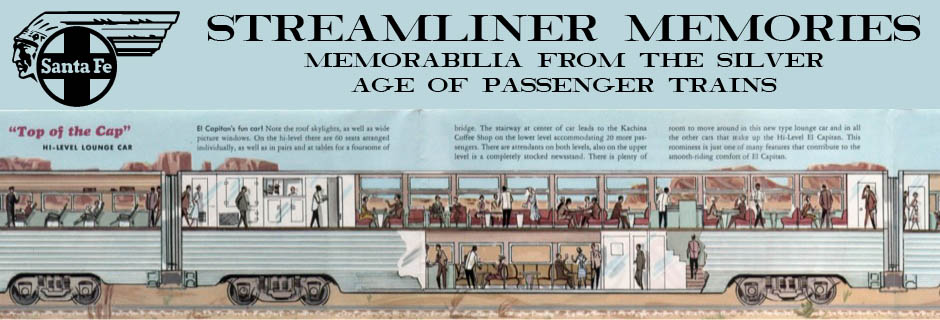Sometime during the 1930s, Canadian Pacific dropped the color paintings that had distinguished its resort booklets in the late 1920s and early 1930s. While the front cover of this booklet is a painting, it would be more accurate to call it an illustration as it is unsigned and appears to have been done by a commercial illustrator rather than a fine artist. As a sign of things to come, the back cover is a color photo.
 Click image to download a 32.0-MB PDF of this 24-page booklet.
Click image to download a 32.0-MB PDF of this 24-page booklet.
Other than a color fold-out map, inside is nothing but black-and-white photos along with some red to highlight headlines. The black-and-white photos, however, tend to be larger and clearer than the ones used in CP’s 1929 booklet.

It’s interesting that the first sentence contains the word “epithet” to describe the phrase “Sea of Mountains”. Yet another example of our changing language. Epithet did not have the negative connotation it has today. I wonder when that word changed meanings?
THe picture of Vancouver is so different from what it looks like today. I first visited Vancouver in 1964 on a high school trip. The population was about 270,000 (now close to 700,000), and the skyline didn’t look much different than it did in 1937. With the influx of mainland Chinese from the 80’s until today, Vancouver’s skyline now looks like a miniature Hong Kong. Many of the immigrants were from Hong Kong, used to living in high rises, and apparently liked doing so. Developers were only too happy to assist, with the result that the majority of the Chinese population, now about 30% of the total, lives in high rises. I don’t think any city in North America has undergone such a sweeping change in skyline sine 1937. It’s quite ironic to see this since Vancouver was a leading center of anti-Oriental sentiment before WWII. During the war, the Japanese were rounded up and sent to camps more thoroughly than any place in North America. The result was very few Japanese were allowed to (or wanted to) return after the war, and Vancouver became about the whitest city on the Pacific coast. Now, 75 years later, the situation is completely reversed, and Vancouver is the first large city in Canada to have a majority population that doesn’t have English as a first language.